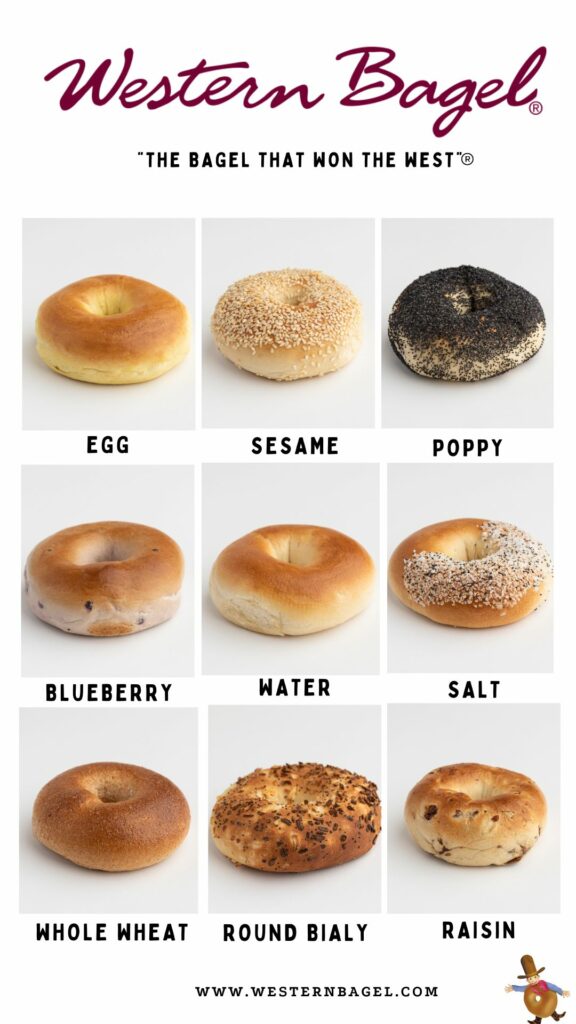No products in the cart.
Blog
Choosing Your Bagel Flavor Often Depends On Your Nutritional Goals
Choosing your bagel flavor often depends on your nutritional goals, dietary needs, and personal health considerations. Here are some factors to consider when selecting a “healthier” bagel
Whole Grains: Seek bagels that are made primarily from whole grains such as whole wheat, oats, or sprouted grains. Whole grains provide more fiber, vitamins, and minerals compared to refined grains. They can help improve digestion and provide longer-lasting energy.
Fiber Content: Look for bagels with a higher fiber content. Fiber is essential for good digestion and can help regulate blood sugar levels. A high-fiber bagel typically contains at least 3 to 5 grams of fiber, our Perfect 10+ Bagels have 9g of Dietary Fiber.
Protein: Consider the protein content of the bagel. Higher protein options can help keep you feeling full longer. Some bagels may include protein-rich ingredients like seeds, nuts, or whole grain flours. Our Perfect 10+ also includes whole wheat flour, oat fiber, grain & seed blend.
Reduced Sodium: Many bagels contain high levels of sodium. Choosing bagels labeled low sodium can be a healthier option, especially for those monitoring their salt intake. Out Alternative Bagel are a great fit, check them out here.
Size: Portion size is also crucial. Many commercially available bagels are quite large and can contain a lot of calories. Opting for mini bagels or half of a regular-sized bagel, or as we like to call them, Bagelettes, can help manage calorie intake. If these seem like a good fit, check these out!
Sugar Content: Check the sugar content on the nutritional label. Some bagels, especially those that are flavored like cinnamon-raisin, can have added sugars. Choosing plain or savory varieties often results in lower sugar intake, check out our options here.
Healthier Bagel Options:
100% Whole Wheat Bagels: These bagels are made entirely from whole wheat flour and offer more nutrients and fiber.
Multigrain Bagels: Look for multigrain bagels that list whole grains as the first few ingredients and have visible seeds and grains.
Remember, what you put on your bagel also affects its healthiness. Topping your bagel with healthy fats like avocado, hummus, or nut butter, adding lean proteins like turkey or salmon, and including plenty of vegetables can make it a balanced meal. Adjusting both the type of bagel and the toppings can help you maintain a healthier diet.

